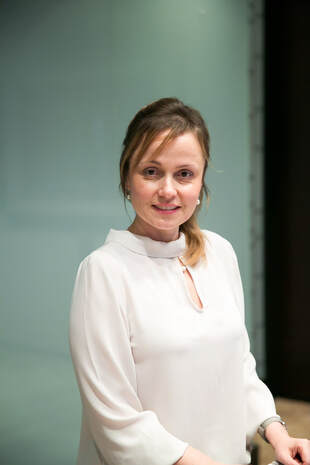By Danny Chan
In 1997, while serving as senior regional manager for NAB, Merv Saultry was approached to research the dental industry. What he found was shocking.
Suppliers were charging dentists vastly different prices for the same product – even if they were located on the same street or in neighbouring townships.
Seeing how individual dental practices were easily exploited for lack of buying power in a largely opaque supply market, Merv decided to leverage his financial knowhow and set up a dental buyer’s network.
The concept was straightforward: Draw on the collective strengths of individual dentists to amass greater negotiating and buying power. That seed idea has since grown into Australia's largest commercial network for dentists.
As Dental Innovations marks its 25th Anniversary this year, it brings to bear a salient point – what Merv had discovered in 1997 is still as relevant today.
United we stand
In a marketplace increasingly dominated by large corporates and health fund providers, the economic imperative for dentists to unite is still as pertinent – though more profoundly felt than ever.
“The Dental Industry has changed significantly over the last 25 years and continues to do so,” says Berris Saultry, Director of Dental Innovations.
“However the value proposition of the independent dentist who owns and operates his or her own practice still remains unchanged.”
The same dichotomy can be said of the company. Although Merv stepped down as the CEO in 2011 to let his sons Tim and Berris run the organisation, nothing has changed fundamentally.
They remain a family business dedicated to improving the bottom-line of their members. They continue to help practice owners systemise their business while leveraging the power of the collective to enhance individual prosperity.
What has changed is the scale and delivery of the business. From a modest outfit in 1997, DI has grown into a bona-fide network boasting more than 750 independent dental practices across Australia and New Zealand. Since its inception, DI has saved its members millions of dollars.
Savings (both time and financial) are accrued from a range of membership benefits: Stock Management and Inventory Control systems including exclusive discount pricing with ten suppliers on more than 60,000 products; reductions in credit card merchant fees; practice insurance premiums; equipment discounts and access to complimentary marketing content resources.
The company has also created various avenues for members to connect and exchange ideas and best practices with other dentists. These include a private online forum, networking events and webinars.
These well-received programs have been developed in keeping with the rapid change of pace as well as increased pressure on dentists.
“Dentists are up against multi-nationals. Venture capital is flooding in. Health funds are attempting to control the industry,” Tim adds.
“It’s an increasingly hostile environment. What most dentists want to do is dentistry but they end up having to cope with the immense pressures of running a business.”
Membership has its privileges
The message is clear. Only by banding together can dentists ever hope of generating enough critical mass to make themselves stand out in the crowded marketplace or heard above the media-saturated cacophony.
That said, there are those who join Dental Innovations with simpler goals.
Dr Sam Rogers, who has been with DI right from the start, said he was looking to form a peer group – preferably one with “very efficient buying power that the Australian Dentist Association wasn’t involved in.”
While complimentary of DI’s peer group support, exclusive deals and customer service, the owner of Northbridge Dental Clinic believes his biggest membership gains were the friendships he had cultivated within DI’s collegial framework.
“It’s the feeling of not being in it alone,” he summarises, identifying one of those ‘invaluable intangibles’ rarely associated with the price of a membership.
Echoing the sentiment, fellow Foundation Member Dr Andrew Prideaux said he also joined DI because he saw the value of grouping with like-minded dentists.
Dr Prideaux joined as part of a group practice in 1998, but found bigger membership yields since moving into his own private practice in 2000.
The Director of Mosman Fine Dental says he benefited the most from DI’s networking information, online portal and benchmarking services.
Dr Prideaux singles out the peer-to-peer chat forum as the go-to conduit for sourcing timely information – everything from bang-for-buck consumables to buying a car. He also appreciates the online ordering portal and the quarterly reports on practice expenditure and other timely data.
The network’s industry-benchmarking data, he attests, outperforms even commercially available third party alternatives.
“As a practice owner, you are always looking for that happy medium between the clinical and operational aspects of dentistry,” he avers, “DI helps to fill part of that knowledge gap – the stuff they don’t teach you in university.”
Mission Possible
One of the “missions" described on the Dental Innovations website is to “take on the big boys” through helping dentists gain leveraged access to the best suppliers and providing peer-to-peer support.
How does the company stack up against the competition? By ‘competition’ we mean big corporate health funds and practice aggregators with deep pockets.
“They may have deep pockets,” Tim Saultry admits, “but not the personalized service and relationships which independent dentists can leverage.
He cites the example of Dental Innovation’s 25-year relationship with Dentsply Sirona which has been supporting the DI Network concept since 1997.
“Corporates that are accountable to investor returns so often miss the importance of relationships. This problem is exacerbated by a high staff turnover where their personnel seldom stay long enough to cultivate strong relationships,” he adds.
“Unlike most other industries, a dentist remains a dentist for their working life. That’s why they look to industry service providers with whom they can partner for the long haul.”
Unlike bureaucratic corporate structures, Berris Saultry believes the DI community thrives on having a proactive support network.
“We saw this community spirit in action during the recent pandemic lockdown,” he says. “Our members were helping each other navigate through that crisis.
“I think that member dental practices will continue to grow as they differentiate themselves from corporate groups in the market.
“Being part of DI will allow those practices to achieve the same economies of scale as corporates but still maintain their independence.”
“Our mission is the same as it was in the beginning,” Tim interjects, “empowering and supporting dentists, allowing them to be proactive within their own industry.”




 RSS Feed
RSS Feed
